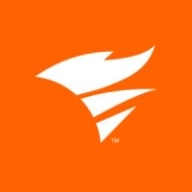

SolarWinds NPM and Datadog are prominent players in network and performance monitoring. SolarWinds NPM's comprehensive device coverage and ease of use give it a notable edge in deployment, while Datadog's extensive integrations and real-time insights make it strong for complex infrastructure visibility.
Features:SolarWinds NPM stands out with comprehensive monitoring capabilities, strong SNMP device support, and modular pricing allowing tailored purchases. It offers extensive hardware compatibility and intuitive custom dashboards. Datadog impresses with real-time visibility across infrastructures, broad application integrations, and intuitive dashboards for quick insights, enabling seamless monitoring in diverse environments.
Room for Improvement:SolarWinds NPM's scalability issues can reduce performance in large deployments, and its element-based licensing becomes costly with scaling. It needs better automation and customization. Datadog's cost structure can be unpredictable, with usage-based billing leading to potential budget overruns. Users seek clearer documentation and customer support for troubleshooting.
Ease of Deployment and Customer Service:SolarWinds NPM is appreciated for straightforward on-premises setup and robust community support, but it could improve integration and scalability options. Datadog excels in rapid deployment, especially in cloud-native environments, with flexible service options and generally positive support experiences, although the complex billing is a drawback.
Pricing and ROI:SolarWinds NPM utilizes modular pricing to align with infrastructure growth, potentially escalating with added modules. It offers good ROI by enhancing network management efficiency. Datadog's usage-based pricing can lead to budget challenges but justifies its cost with comprehensive capabilities that prevent downtimes and support fast problem resolution, ensuring solid ROI.
The return on investment is significant as the solution effectively reduces costs while being worth its expense.
If there is no timely response, getting a resolution is more difficult.
We had contact with SolarWinds regarding the implementation, and they were helpful.
They have good technical support.
SolarWinds NPM is scalable and effective in handling large network infrastructures.
The NPM product is stable, particularly when used for simple network monitoring.
The documentation is adequate, but team members coming into a project could benefit from more guided, interactive tutorials, ideally leveraging real-world data.
In future updates, I would like to see AI features included in Datadog for monitoring AI spend and usage to make the product more versatile and appealing for the customer.
There should be a clearer view of the expenses.
Customers have given feedback about the delayed response times from the technical team.
SolarWinds needs to upscale on observability and add full-fledged observability features, including security features.
Features such as taking backup of the devices or configurations of the devices can be included in further versions of SolarWinds NPM.
The setup cost for Datadog is more than $100.
PRTG's package offers all features in one bundle, which is cost-effective.
The solution is considered expensive.
Our architecture is written in several languages, and one area where Datadog particularly shines is in providing first-class support for a multitude of programming languages.
The technology itself is generally very useful.
It provides a detailed overview of the network, which is valuable.
The most valuable feature for us is the database performance analyzer, which we use a lot.
SolarWinds NPM has specific modules for monitoring different network capabilities, which provides rich features for carrying out specific tasks.
| Product | Market Share (%) |
|---|---|
| SolarWinds NPM | 4.4% |
| Datadog | 3.1% |
| Other | 92.5% |


| Company Size | Count |
|---|---|
| Small Business | 78 |
| Midsize Enterprise | 42 |
| Large Enterprise | 82 |
| Company Size | Count |
|---|---|
| Small Business | 59 |
| Midsize Enterprise | 33 |
| Large Enterprise | 84 |
Datadog integrates extensive monitoring solutions with features like customizable dashboards and real-time alerting, supporting efficient system management. Its seamless integration capabilities with tools like AWS and Slack make it a critical part of cloud infrastructure monitoring.
Datadog offers centralized logging and monitoring, making troubleshooting fast and efficient. It facilitates performance tracking in cloud environments such as AWS and Azure, utilizing tools like EC2 and APM for service management. Custom metrics and alerts improve the ability to respond to issues swiftly, while real-time tools enhance system responsiveness. However, users express the need for improved query performance, a more intuitive UI, and increased integration capabilities. Concerns about the pricing model's complexity have led to calls for greater transparency and control, and additional advanced customization options are sought. Datadog's implementation requires attention to these aspects, with enhanced documentation and onboarding recommended to reduce the learning curve.
What are Datadog's Key Features?In industries like finance and technology, Datadog is implemented for its monitoring capabilities across cloud architectures. Its ability to aggregate logs and provide a unified view enhances reliability in environments demanding high performance. By leveraging real-time insights and integration with platforms like AWS and Azure, organizations in these sectors efficiently manage their cloud infrastructures, ensuring optimal performance and proactive issue resolution.
SolarWinds NPM is a network monitoring solution that enables you to detect, diagnose, and resolve network performance issues and outages quickly and efficiently. The solution is a powerful tool that can help you increase service levels, reduce downtime with multi vendor network monitoring, simplify the management of complex network devices, improve operational efficiency, and much more.
SolarWinds NPM Features
SolarWinds NPM has many valuable key features. Some of the most useful ones include:
SolarWinds NPM Benefits
There are several benefits to implementing SolarWinds NPM. Some of the biggest advantages the solution offers include:
Reviews from Real Users
Below are some reviews and helpful feedback written by PeerSpot users currently using the SolarWinds NPM solution.
PeerSpot user Andrew N., Senior Network Engineer at Element Critical, says, “The "Performance Analyzer" feature is the solution's most valuable aspect. It's able to do the bounded graphs of all the interface stats, from errors to broadcasts and to current traffic. With a click of a button you're able to, in one interface, look at historical data for those items.” He also adds, “From the troubleshooting point of view, just having that peace of mind is great. And, The solution is extremely stable. We haven't had any issues in that regard. We haven't had issues with bugs, glitches, or crashes."
Daniel S., Systems and Data Warehouse Supervisor at MMSD, mentions, “The alerting and usage tracking is a valuable feature because it alerts us when we're getting near capacity on disk space, network utilization or processor utilization. It helps us manage our capacity and enables us to be proactive.”
A Senior Vice President and CIO at a financial services firm explains, “As we look to add more servers to our virtual environment and to understand the impact, the solution allows us to dig into the historical charts related to capacity planning. It also gives us visibility of spikes and allows us to track down the reasons for their occurrences. So too, it makes room for potential processes that have gotten hung or runaway and to know when it's time to reboot a server or service.”
Dinesh N., Digital Innovation at Bobcat Company, states, “The best part of the solution is the sharing display. It gives a general public ID wherein everyone can link to a public display. That's a good feature.”
Fazal A., Implementation & Support Specialist at 360Factors, comments, “We have configured multiple alerts for our network devices, including routers and switches, so that we are notified if any interface goes down. In the event an interface goes down, we have multiple reports that include availability monitoring, network uptime monitoring, and network downtime monitoring. These reports are on multiple schedules such as the end of the day, end of the last business day of the week, monthly, and quarterly. This gives us the ability to provide reports to our management and let them know the performance of our network.”
We monitor all Network Monitoring Software reviews to prevent fraudulent reviews and keep review quality high. We do not post reviews by company employees or direct competitors. We validate each review for authenticity via cross-reference with LinkedIn, and personal follow-up with the reviewer when necessary.